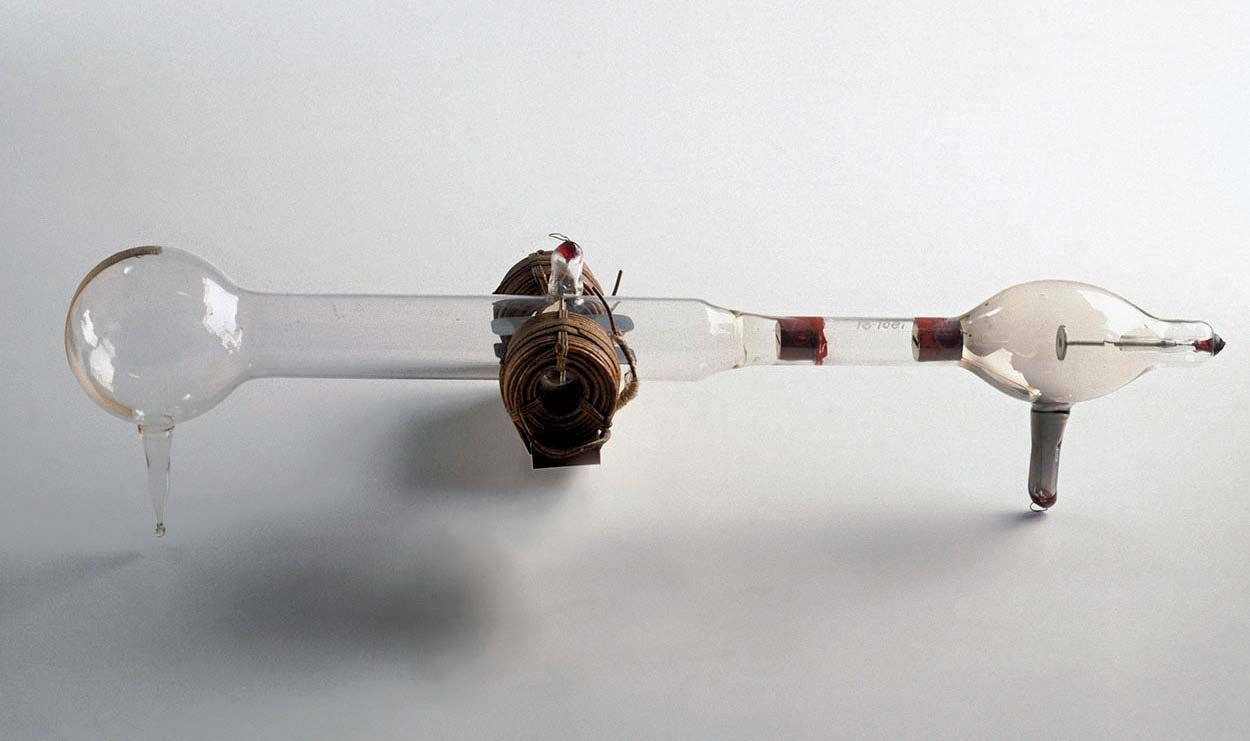Joseph John Thomson, often referred to as J.J. Thomson, was a monumental figure in the realm of physics, whose groundbreaking discovery of the electron in 1897 revolutionized our understanding of atomic structure. Born in Cheetham Hill, near Manchester, England, on December 18, 1856, Thomson’s work not only earned him the Nobel Prize in Physics in 1906 but also a knighthood in 1908. His legacy extends beyond his own research, as he fostered a generation of brilliant physicists at the Cavendish Laboratory, shaping the course of modern science. This article delves into the life, work, and enduring impact of Sir Joseph John Thomson, a name synonymous with the dawn of subatomic physics.
The Formative Years and Academic Journey of Joseph John Thomson
Joseph John Thomson’s early life hinted at a promising academic future. At just 14 years old, he enrolled at Owens College, now known as the University of Manchester, an institution ahead of its time in offering experimental physics courses. This early exposure to hands-on physics was instrumental in shaping his career path. In 1876, Thomson’s academic excellence earned him a scholarship to Trinity College, Cambridge, where he would remain for his entire professional life. He excelled in mathematics, earning his B.A. degree in 1880. However, the allure of practical investigation drew him to the Cavendish Laboratory, a hub of scientific innovation. During this period, Thomson also began exploring the theoretical intricacies of electromagnetism, building upon the foundational work of James Clerk Maxwell. Maxwell’s theories posited the interconnectedness of electricity and magnetism, a concept that profoundly influenced Thomson’s later research endeavors.
The Pivotal Discovery of the Electron by J.J. Thomson
 J.J. Thomson's Cathode Ray Tube Experiment
J.J. Thomson's Cathode Ray Tube Experiment
Joseph John Thomson’s most significant contribution to science was undoubtedly his discovery of the electron. This breakthrough emerged from his dedicated investigation into cathode rays, a subject of intense debate among physicists in the late 19th century. Were these rays waves in the ether, as many German scientists believed, or were they composed of charged particles, as proposed by British and French physicists? Thomson, utilizing advanced vacuum tube technology, embarked on a series of meticulous experiments to resolve this controversy. His experiments with cathode ray tubes demonstrated convincingly that these rays were indeed made up of particles. Crucially, he found that these particles, which he initially termed “corpuscles” and are now known as electrons, were identical regardless of the gas used in the tube or the metal used for the electrodes. This universality led Thomson to the revolutionary conclusion that these corpuscles were fundamental constituents of all matter, far smaller than atoms themselves. This discovery, announced in 1897, marked the birth of subatomic physics and fundamentally altered the understanding of the atom, moving it from being considered indivisible to a complex entity with internal structure. Thomson’s work effectively “split the atom,” not in the nuclear sense, but by identifying and isolating one of its primary components.
Cathode Ray Experiments and the Electron’s Revelation
Thomson’s experimental setup involved a cathode ray tube, a glass vessel from which most of the air had been removed. By applying a high voltage across electrodes at either end of the tube, he generated cathode rays. To determine the nature of these rays, Thomson applied electric and magnetic fields to deflect them. He observed that the rays were deflected by both fields in a manner consistent with negatively charged particles. Furthermore, by measuring the degree of deflection, he was able to calculate the charge-to-mass ratio of these particles. This ratio was significantly larger than that of any known ion, implying that these particles were either much more highly charged or much less massive than atoms. Thomson’s meticulous measurements and analysis led him to conclude that the latter was true: these cathode rays were composed of particles with a mass far smaller than that of the hydrogen atom, the lightest atom known at the time. His experiments were groundbreaking in their precision and in the clarity of their results, providing compelling evidence for the existence of subatomic particles and the electron.
J.J. Thomson’s Atomic Model and Contributions to Atomic Theory
Following his discovery of the electron, Joseph John Thomson proposed an atomic model, often referred to as the “plum pudding model.” In this model, the atom was envisioned as a sphere of positive charge, with negatively charged electrons embedded within it, like plums in a pudding. While this model was later superseded by Ernest Rutherford’s nuclear model, it was a crucial step in the development of atomic theory. It was the first model to incorporate subatomic particles and to suggest that atoms were not indivisible spheres but had internal structure. Thomson’s model, despite its limitations, provided a framework for understanding the electrical neutrality of atoms and the existence of negatively charged constituents. His willingness to propose and refine atomic models, even when they were eventually replaced by more accurate ones, highlights his commitment to advancing scientific understanding through theoretical frameworks as well as experimental investigation.
Leadership at the Cavendish Laboratory and Recognition
In 1884, Joseph John Thomson’s rising prominence in the scientific community was cemented by his election as a Fellow of the Royal Society and his appointment to the prestigious Cavendish Professorship of Physics at the Cavendish Laboratory in Cambridge. Taking on this role at the young age of 28, Thomson proved to be an exceptional leader and administrator. He oversaw a period of remarkable growth and productivity at the Cavendish Laboratory, transforming it into a world-leading center for physics research. Despite limited university funding, Thomson skillfully managed the laboratory’s finances, primarily through student fees, and even secured funding for expansions. His leadership style was characterized by encouragement and inspiration, attracting talented researchers from across the globe. His contributions were recognized with the Nobel Prize in Physics in 1906, specifically for his work on the electrical conductivity of gases, which was intrinsically linked to his discovery of the electron. Further accolades followed, including a knighthood in 1908 and the Order of Merit in 1912, solidifying his status as one of Britain’s most distinguished scientists.
J.J. Thomson’s Enduring Legacy: Shaping Modern Physics
Joseph John Thomson’s impact on science extends far beyond his own discoveries. He is rightfully considered a father of modern atomic physics. His discovery of the electron opened the door to the exploration of the atom’s internal structure and paved the way for countless subsequent discoveries in nuclear physics and particle physics. The work initiated by Thomson and carried forward by his students and successors at the Cavendish Laboratory laid the foundation for much of 20th-century physics and continues to influence scientific research today. Remarkably, seven Nobel Prizes were awarded to researchers who worked under Thomson’s guidance at the Cavendish, including Ernest Rutherford, whose work on the nuclear model of the atom built directly upon Thomson’s foundations. Beyond his scientific achievements, Thomson was also an influential educator, emphasizing the importance of independent thinking and hands-on experimentation in scientific training. His approach to teaching and research fostered a culture of innovation and collaboration that continues to inspire scientists. Sir Joseph John Thomson’s dedication to unraveling the mysteries of the atom has left an indelible mark on science and technology, shaping our understanding of the fundamental building blocks of the universe. His life and work serve as a testament to the power of curiosity, rigorous experimentation, and visionary leadership in scientific progress.


